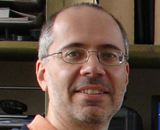 Roger Maltby’s book Notable Names in Anaesthesia contains fascinating biographies of some of the great and the good whose names are familiar to anaesthetists everywhere, such as Magill and Macintosh. Since it was written, a new category of notable names has appeared: those anaesthetists who are famous for the wrong reasons. I’d like to suggest the title: Infamous Names in Anaesthesia.
Roger Maltby’s book Notable Names in Anaesthesia contains fascinating biographies of some of the great and the good whose names are familiar to anaesthetists everywhere, such as Magill and Macintosh. Since it was written, a new category of notable names has appeared: those anaesthetists who are famous for the wrong reasons. I’d like to suggest the title: Infamous Names in Anaesthesia.
Currently it would have four entries: one is so famous he’s known all over the world, although not as extensively as the popstar he was convicted of killing. (Though not actually an anaesthetist, Conrad Murray’s conviction was related to the use of the anaesthetic propofol).
It’s the other three that interest me here: Scot Reuben, Joachim Boldt, and Yoshitaka Fujii; all prolific anaesthetic researchers, until their dramatic fall from grace for research misconduct.
Scot Reuben was the first to go, sentenced to six months’ imprisonment for fraud in 2010, having admitted he’d made up several studies. In total, 22 publications were retracted, an anaesthetic record at the time.
Hot on the heels of Reuben came the Boldt case, leading to an unprecedented collaboration between 18 anaesthetic editors in chief in 2011 and ultimately, 89 retractions—making Boldt the most retracted investigator (of any specialty) of all time.
Boldt won’t hold his record for long. Currently, a group of 23 editors in chief is awaiting the final reports of Fujii’s institutions before deciding how many out of almost 200 suspect papers will be retracted. The Japanese Society of Anesthesiologists (JSA) has already reported the results of its own investigation, which concluded that 172 out of 212 papers it examined were fabricated. (In a cringeworthy twist, the JSA report reproduced several articles about publication ethics and research misconduct that were copied from Anaesthesia, verbatim, without permission. But not as cringeworthy as the BMJ printing a news item with a photo of Yoshitaka Fujii—unfortunately, the wrong Yoshitaka Fujii).
The Fujii case is fascinating—not least because of its scale, and how it has unfolded after an incredible 20 years. But also because of the way the evidence that has convinced the 23 editors in chief of Fujii’s wrongdoing comes from Fujii’s studies themselves—and here I must acknowledge the extraordinary work by one of my colleagues, John Carlisle, who has written what can only be described as a relentless mathematical destruction of the entire body of Fujii papers. I urge you to read it—and the accompanying “user’s guide” by Pandit; I believe that the Carlisle article utterly changes the landscape for dealing with data fabrication. Enough perhaps to earn a place in Notable Names in Anaesthesia, even, were Roger Maltby ever to update it.
One question remains: why anaesthesia? I’ll consider that in part two.
See also:
- BMJ news: Japanese doctor is heading for record number of retracted research papers
- Steve Yentis: Infamous names in anaesthesia: part two
Competing interests: I am editor in chief of Anaesthesia in which some of the above linked articles (including the Carlisle paper) are published, and a co-signatory of the joint editor in chief letters to Boldt’s and Fujii’s institutions. I was a member of the Committee on Publication Ethics Council until earlier this year.
Steve Yentis is a consultant anaesthetist in London and editor in chief of Anaesthesia.
